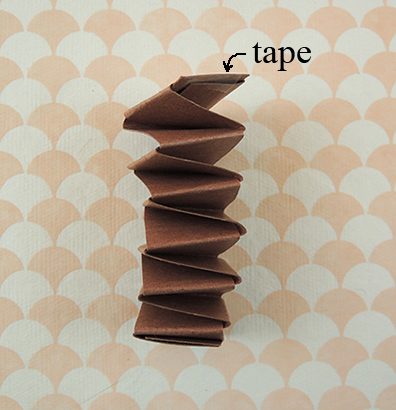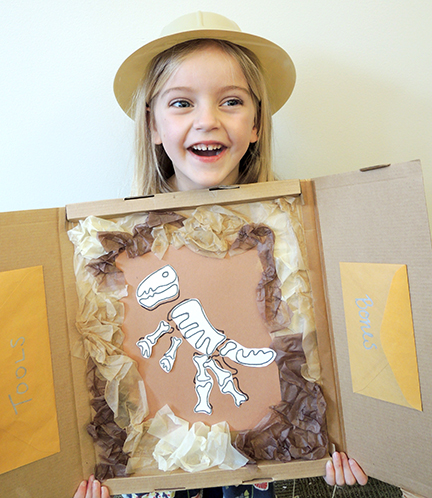 It begins as a simple brown briefcase, but unfolds into a magnetized dino dig! No briefcase? No worries! This Katie-designed masterpiece can be replicated with any box top or cardboard surface.
It begins as a simple brown briefcase, but unfolds into a magnetized dino dig! No briefcase? No worries! This Katie-designed masterpiece can be replicated with any box top or cardboard surface.
We read One Hundred Bones by Yuval Zommer (Templar, 2016). Scruff is a messy but happy-go-lucky stray who loves to dig (much to the chagrin of the neighbors). But when he finds an enormous cache of bones, he rallies the other dogs to help unearth them. Some of these bones seem a little…unusual, so the gang goes to the Natural History Museum, where Professor Dinovsky is happy to receive their dino-tastic discovery AND adopt Scruff, digger extraordinaire!
You’ll need:
- 1 flat piece of cardboard (ours was 10″ x 15″)
- 1 flexible magnetic adhesive sheet (ours was 8″ x 10″)
- 1 dino bones template, printed on 8.5″ x 11″ brown construction paper
- 1 dino bones template, printed on 8.5″ x 11″ white card stock
- 1 dino dig tools template, printed on 8.5″ x 11″ white card stock
- Scissors, glue and tape for construction
- Markers for decorating
In its most basic form, this is a magnetized board that you can match the also-magnetized bones to. So this project can be done with any flat piece of cardboard. First, trim a .5″ x 10″ strip off a 8″ x 10″ flexible magnetic sheet (which we purchased on Amazon). Set the strip aside, then stick the remaining sheet to the cardboard. Glue the dino bone template on top of the magnet sheet. In the below photo, you can see the black magnetic sheet peeking out from under the brown paper…
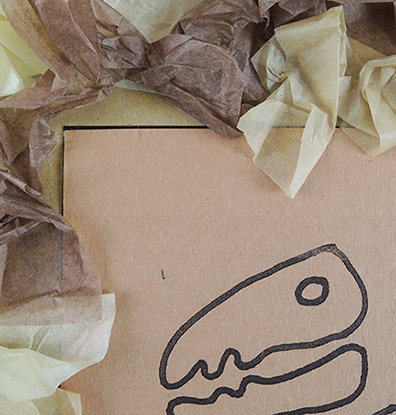 Now cut the dino bones from the template. Section the magnetic strip into pieces, then stick them onto the backs of the various bones. The bones will now connect to the dino template (and you can see we added a tissue paper border for extra fun)!
Now cut the dino bones from the template. Section the magnetic strip into pieces, then stick them onto the backs of the various bones. The bones will now connect to the dino template (and you can see we added a tissue paper border for extra fun)!
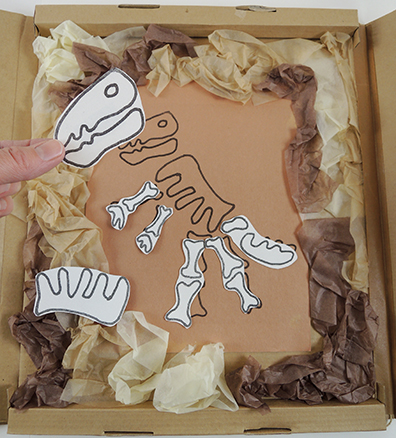 Scatter the bones through a room and have your little paleontologists discover, dig, and collect them up using the paper tools from this template!
Scatter the bones through a room and have your little paleontologists discover, dig, and collect them up using the paper tools from this template!
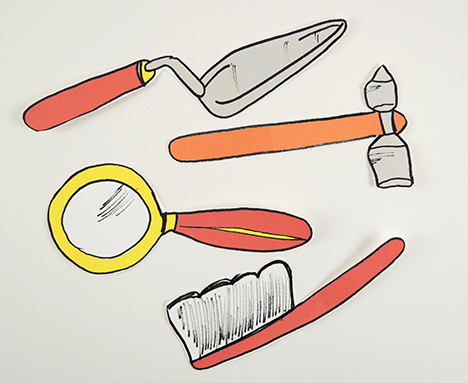 We had the good fortune of scoring some flat cardboard boxes with flaps through this program, so we took the project to the next level by turning it into a fold out dig with envelope pockets for the bones and tools.
We had the good fortune of scoring some flat cardboard boxes with flaps through this program, so we took the project to the next level by turning it into a fold out dig with envelope pockets for the bones and tools.
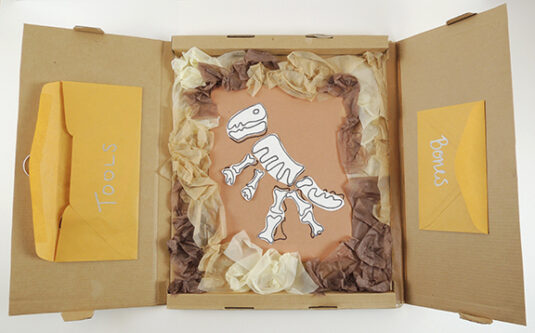 We added a string strap to turn in into a portable briefcase, complete with a wood bead and rubber band closure and dino prints stenciled on the outside!
We added a string strap to turn in into a portable briefcase, complete with a wood bead and rubber band closure and dino prints stenciled on the outside!

We finished the entire project by handing out plastic pith helmets (purchased from Oriental Trading Company). As you can imagine, a dino-themed project went over VERY well. There’s always a dino shirt or two at story time, but we were delighted when one little girl arrived with a stunning purple dino bag…
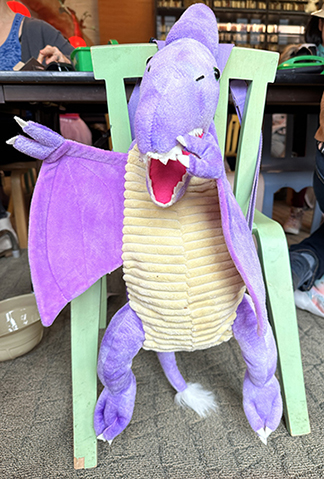 And I can’t resist adding this photo of Katie snagging the above photo whilst being carefully supervised by the dino bag’s owner. So sweet!
And I can’t resist adding this photo of Katie snagging the above photo whilst being carefully supervised by the dino bag’s owner. So sweet!


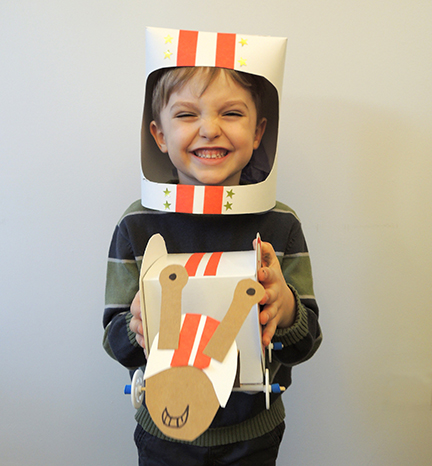
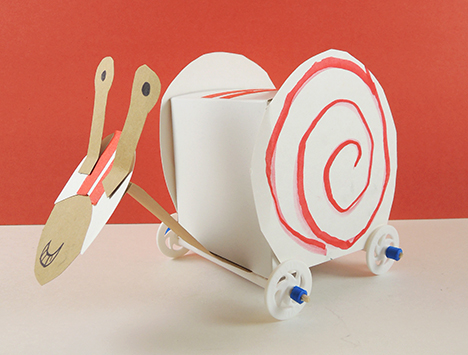 The snail part of this project is very simple. Decorate 2 poster board snail shells and attach them to both sides of a small box. To make the snail’s head and neck, round one end of an 8″ strip of poster board, then fold to create a head. Don’t forget the eye stalks! We also added a paper racing helmet, but that is optional. Tab the other end of the strip and attach it to the underside of the box.
The snail part of this project is very simple. Decorate 2 poster board snail shells and attach them to both sides of a small box. To make the snail’s head and neck, round one end of an 8″ strip of poster board, then fold to create a head. Don’t forget the eye stalks! We also added a paper racing helmet, but that is optional. Tab the other end of the strip and attach it to the underside of the box.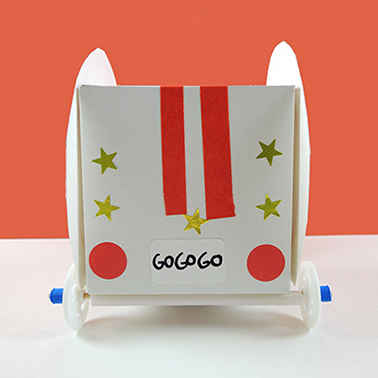 Now to get your snail moving! We thought an RC snail rally would be super awesome, so I made a quick trip to Jazams, our local toy store. I found these RC trucks for $17.
Now to get your snail moving! We thought an RC snail rally would be super awesome, so I made a quick trip to Jazams, our local toy store. I found these RC trucks for $17.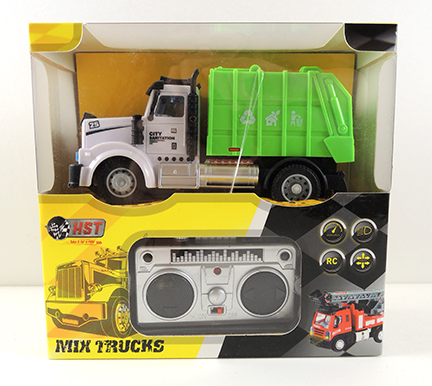 One quick note: You’ll notice that the RC truck in the picture above has a nose that sticks out. There was another box, exact same recycling truck, except it had a flat front (see below). Turns out the truck with the flat front held the snail box MUCH better. So aim to find a flat front truck if at all possible!
One quick note: You’ll notice that the RC truck in the picture above has a nose that sticks out. There was another box, exact same recycling truck, except it had a flat front (see below). Turns out the truck with the flat front held the snail box MUCH better. So aim to find a flat front truck if at all possible!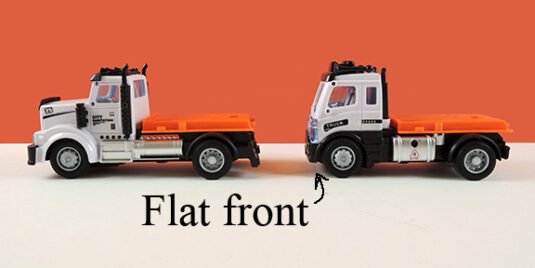 I removed the green recycle section from the back of the truck, cut a hole in the bottom of each snail box, and then slid the snail onto the cab of the truck like so:
I removed the green recycle section from the back of the truck, cut a hole in the bottom of each snail box, and then slid the snail onto the cab of the truck like so: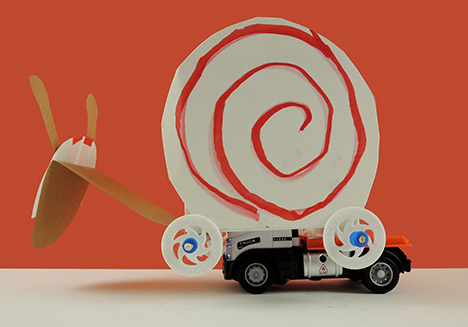
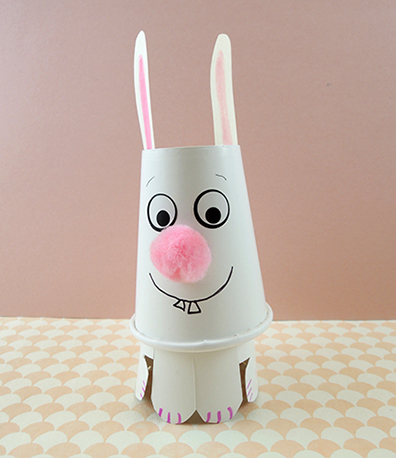
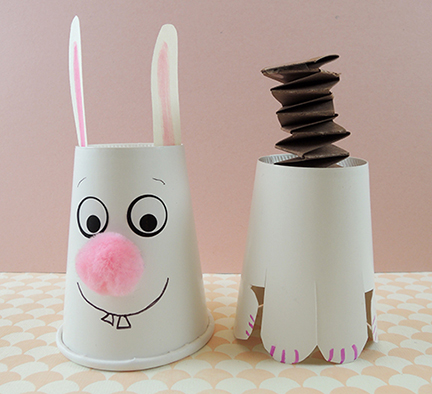 This project is essentially two cups stacked on top of one another with a paper spring in the middle. To begin, flip both cups upside down, then use markers to draw a face on the first cup. Add some paper ears (and an optional pom-pom nose if you desire!). Use scissors to cut bunny legs on the second cup.
This project is essentially two cups stacked on top of one another with a paper spring in the middle. To begin, flip both cups upside down, then use markers to draw a face on the first cup. Add some paper ears (and an optional pom-pom nose if you desire!). Use scissors to cut bunny legs on the second cup.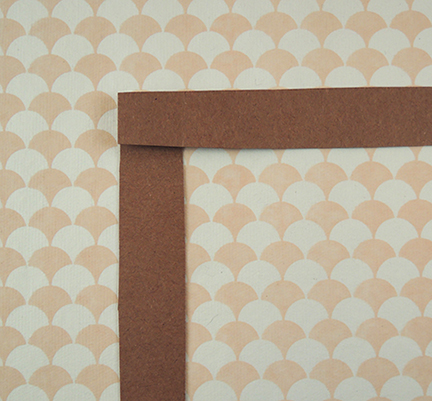 Keeping the corners together, alternately fold each strip up towards you. Continue until the strips are completely folded into an accordion spring. Tape the end sections together for more stability.
Keeping the corners together, alternately fold each strip up towards you. Continue until the strips are completely folded into an accordion spring. Tape the end sections together for more stability.